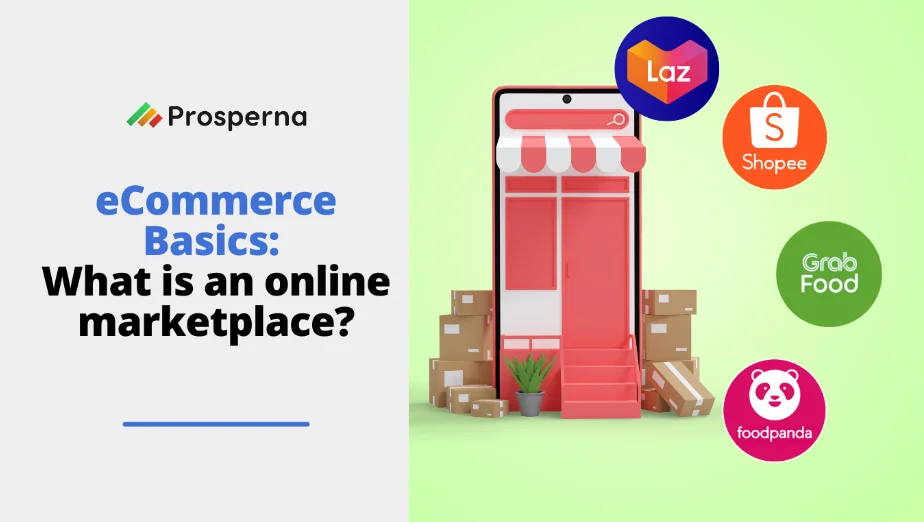The days when a product business was synonymous with physical objects are behind us. Did you know that the global digital product market size is expected to reach a staggering $7.3 trillion by 2024? Which means that sales on digital products will continue to soar, giving digital creators a big opportunity to profit from their digital products. This astonishing statistic underscores the shift towards digitalization. In today’s world, digital products encompass a vast array of offerings, from software applications and e-books to online courses and digital art.
What sets digital products apart is their infinite potential and scalability. Unlike traditional products, digital creations can be effortlessly replicated and distributed to a global audience at the click of a button. According to a recent survey, over 67% of consumers have purchased a digital product in the last year, highlighting the ever-increasing demand for these versatile offerings. This agility has redefined business models, creating opportunities for innovation and reaching markets that were once inconceivable.
Top 13 Types of Digital Products
The range of digital products available is as diverse as the imagination itself. From software solutions that streamline tasks and entertainments that transport us to new worlds, to knowledge that empowers and art that inspires, the digital realm offers a lot to be explored.
Here’s a list of the most popular digital products:
- E-books:
Digital books available in various formats (e.g., PDF, EPUB) that can be read on e-readers, tablets, and computers, covering fiction, non-fiction, and educational topics. - Online Courses:
Educational content presented in video, text, or interactive formats, covering a wide range of subjects, often accompanied by quizzes or assignments. - Digital Art and Graphics:
High-quality digital illustrations, paintings, and graphic design assets, including stock photos, icons, fonts, and templates. - Digital Music Albums:
Collections of songs or music tracks available for download or streaming from platforms like iTunes, Spotify, and Apple Music. - Web Templates and Themes:
Pre-designed website layouts and themes for various platforms like WordPress, allowing users to create and customize their websites easily. - Podcasts:
Audio content, usually episodic, covering a wide range of topics and available for streaming or download.

- Digital Magazines:
Online publications with interactive features, often available through subscription services. - Software as a Service (SaaS):
Cloud-based software solutions accessed via the internet, often on a subscription basis, for tasks such as project management, customer relationship management (CRM), and accounting. - Mobile Apps:
Applications designed for smartphones and tablets that offer a wide range of functionalities, from games and entertainment to productivity tools and utilities. - Digital Marketing Services:
Services that help businesses and individuals with online marketing, including SEO, social media management, and email marketing. - Online Games:
Video games and interactive experiences that can be played on various devices, including consoles, PCs, and mobile devices. - Digital Collectibles and NFTs:
Unique digital assets, often backed by blockchain technology, which can include digital art, trading cards, and virtual real estate. - Web Hosting and Domain Services:
Services that provide server space and domain registration for websites and online businesses.
These digital products cater to a wide array of interests and needs in the digital world, offering convenience, entertainment, education, and more.
How to Create a Digital Product
Launching your own digital product is a thrilling endeavor and here are the steps you can take if you start creating one.
- To begin, identify a niche or problem that resonates with your target audience. This initial concept is the spark that will fuel your digital product’s development. Dive into brainstorming sessions, jotting down ideas, and refining them until you find the perfect blend of innovation and utility.
- Once your concept takes shape, it’s time to outline your product’s core features and functionalities. Detailing these aspects helps clarify your vision and provides a blueprint for the development phase. Whether you’re planning a mobile app, an e-book, a software tool, or any other digital creation, this roadmap becomes your guiding light.
- The design and development phase is where your concept begins to materialize. Here, you’ll decide on the technical requirements, such as programming languages and frameworks. If you’re not tech-savvy, consider collaborating with experienced developers or designers to bring your vision to life. it’s crucial to consider your target market. Building user personas and conducting market research can provide valuable insights into your audience’s needs and preferences.
- Before launching your digital product to the world, consider creating a prototype or minimum viable product (MVP). This allows you to test your concept with a smaller audience, gather feedback, and make necessary improvements. Iteration is a vital part of the development process, ensuring your product evolves to meet user expectations.
- Finally, as you prepare for the launch, think about your marketing strategy. How will you reach your target audience? Social media, email marketing, and collaborations with influencers can help create buzz. Post-launch, continue to gather feedback and make enhancements to ensure your digital product delivers a remarkable experience.
The journey of creating a digital product is filled with excitement, challenges, and learning opportunities. But remember, every step brings you closer to transforming your vision into a valuable digital asset that has the potential to make a lasting impact in the digital landscape.
10 Most Effective Sales Techniques When Selling Digital Products
Effective sales techniques for digital products require a combination of strategies and a deep understanding of your target audience. Here are sales technique that you can get started today:
- Targeted Marketing: Identify your ideal customer persona and tailor your marketing efforts to reach this specific audience through channels they frequent. Use demographics, interests, and online behavior to create targeted ads and content.
- Compelling Product Descriptions: Craft engaging and informative product descriptions. Highlight the unique benefits and features of your digital product to show potential customers how it can solve their problems or improve their lives.
- Pricing Strategies: Research the market to determine competitive pricing. Consider offering tiered pricing options, such as a basic version and a premium version with additional features.
- Limited-Time Offers: Create a sense of urgency by offering time-limited promotions or discounts. People are more likely to make a purchase if they feel they might miss out on a good dea

- Cross-Selling and Up-Selling: Suggest related products or upgrades to customers during the purchase process. For example, if someone is buying an e-book, offer a bundle that includes an audiobook version for a higher price.
- Email Marketing: Build an email list and use it to engage with potential and existing customers. Send regular newsletters with valuable content, special offers, and updates about new products.
- Content Marketing: Develop valuable content related to your digital products. Blog posts, videos, and tutorials can showcase your expertise and provide added value to your audience.
- Affiliate Marketing: Partner with affiliates who can promote your products in exchange for a commission. This can expand your reach and drive sales.
- Customer Support: Provide excellent customer support to address inquiries and issues promptly. A positive customer service experience can lead to repeat purchases and referrals.
- Visual Assets: Use high-quality visuals, such as images, videos, and graphics, to showcase your digital products. Visuals help customers understand what they are purchasing.
Continuously test different sales techniques, such as pricing, headlines, and call-to-action buttons, to determine what works best for your audience.
How to Sell Digital Products
Selling digital products offers a world of possibilities, but success in this realm requires a thoughtful approach. Begin by setting up a user-friendly digital storefront or utilizing established platforms like Etsy, Gumroad, or Prosperna to showcase your products. Effective product descriptions and high-quality visuals are key; they provide potential customers with a clear understanding of what they’re purchasing. Consider pricing your digital products competitively, factoring in your time, expertise, and production costs. Marketing plays a pivotal role. Utilize social media, email marketing, and content creation to build anticipation and awareness. Customer reviews and testimonials add credibility to your products, so encourage satisfied buyers to share their experiences. Offering free samples or limited-time promotions can also entice potential customers. Lastly, ensure a seamless purchasing process. Digital products should be instantly accessible upon purchase, so an automated delivery system is crucial. Don’t forget to provide excellent customer support, promptly addressing any inquiries or issues. With these strategies in place, you’ll be well on your way to successfully selling your digital creations in the digital marketplace

Digital Products FAQs
Why are digital products a good investment?
Digital products represent a compelling investment opportunity in today’s digital age. Unlike physical goods, they require no inventory, shipping, or production costs, making them highly cost-effective. Their scalability is virtually limitless, allowing you to reach a global audience effortlessly. Moreover, digital products can be sold repeatedly, generating passive income over time. The low barrier to entry means that anyone with a valuable skill, knowledge, or creative idea can tap into this market. With the right marketing and customer engagement strategies, the potential for profit and growth in the digital product space is boundless, making it a wise and accessible investment choice for entrepreneurs and creators alike.
What are some additional tips for maximizing your profits with digital products?
To maximize profits with digital products, start by selecting a niche you’re passionate about and invest in high-quality content. Pricing strategies should be research-driven, and marketing efforts should encompass social media, email campaigns, and collaborations. Leverage SEO for organic traffic, engage with customers through webinars or communities, and create a sense of urgency with limited-time offers. Cross-sell and up-sell related products, encourage customer reviews for trust-building, and continuously improve your offerings based on feedback and data analytics. Diversify your product line, explore licensing and partnerships, and ensure excellent customer support. Protect your intellectual property to maintain control over distribution. By applying these strategies, you can enhance profitability and success in the digital product space.
Final Thoughts
Digital products represent a compelling investment opportunity in today’s digital age. Unlike physical goods, they require no inventory, shipping, or production costs, making them highly cost-effective. Their scalability is virtually limitless, allowing you to reach a global audience effortlessly. Moreover, digital products can be sold repeatedly, generating passive income over time. The low barrier to entry means that anyone with a valuable skill, knowledge, or creative idea can tap into this market. With the right marketing and customer engagement strategies, the potential for profit and growth in the digital product space is boundless, making it a wise and accessible investment choice for entrepreneurs and creators alike.
Prosperna, Your Partner to eCommerce Success
Prosperna is an all-in-one eCommerce platform for Philippine businesses and digital creators. We are on a mission to empower 1 million Filipinos with simple and affordable eCommerce solutions.
In fact, we are super passionate about helping Philippine businesses and digital creators we’re giving you a free account forever!
Want to start selling online? Create your free-forever Prosperna account now.




